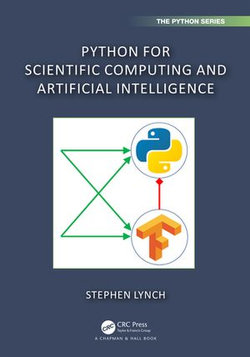
-
Books
-
Education
-
eBooks
-
Audio Books
-
Film & TV
-
Calendars, Diaries & Stationery
-
Giftshop

Python for Scientific Computing and Artificial Intelligence is split into 3 parts: in Section 1, the reader is introduced to the Python programming language and shown how Python can aid in the understanding of advanced High School Mathematics. In Section 2, the reader is shown how Python can be… more
Python for Scientific Computing and Artificial Intelligence is split into 3 parts: in Section 1, the reader is introduced to the Python programming language and shown how Python can aid in the understanding of advanced High School Mathematics. In Section 2, the reader is shown how Python can be used to solve real-world problems from a broad range of scientific disciplines. Finally, in Section 3, the reader is introduced to neural networks and shown how TensorFlow (written in Python) can be used to solve a large array of problems in Artificial Intelligence (AI).
This book was developed from a series of national and international workshops that the author has been delivering for over twenty years. The book is beginner friendly and has a strong practical emphasis on programming and computational modelling.
Features:
Support Material
GitHub Repository of Python Files and Notebooks: https://github.com/proflynch/CRC-Press/
Solutions to All Exercises:
Section 1: An Introduction to Python: https://drstephenlynch.github.io/webpages/Solutions_Section_1.html
Section 2: Python for Scientific Computing: https://drstephenlynch.github.io/webpages/Solutions_Section_2.html
Section 3: Artificial Intelligence: https://drstephenlynch.github.io/webpages/Solutions_Section_3.html
lessThis item is delivered digitally
Thanks for reviewing Python for Scientific Computing and Artificial Intelligence. We will process your review. Accepted reviews will be posted within 3-7 business days.
Be the first to know, stay up to date with what's trending and get staff picks in your inbox with our newsletter


Public: Allow anyone to view or shop your List
Private: No one can view or shop your List
We have kept your A&R details for your new Angus & Robertson account
We also noticed that you have previously shopped at Bookworld. Would you like us to keep your Bookworld order history?
We also noticed that you have an account on Bookworld. Would you like us to keep your Bookworld details, including delivery addresses, order history and citizenship information?
Share This eBook